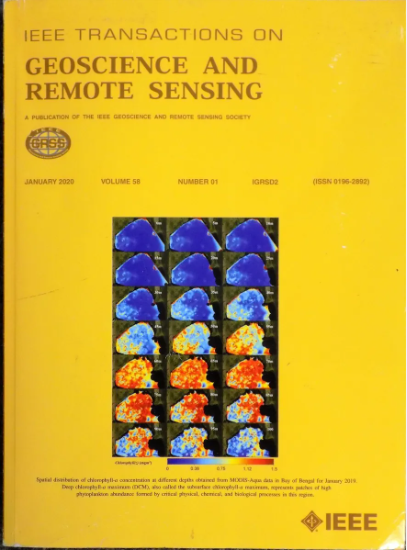利用最小二乘反向时间迁移和源编码进行去噪正则化
IF 7.5
1区 地球科学
Q1 ENGINEERING, ELECTRICAL & ELECTRONIC
IEEE Transactions on Geoscience and Remote Sensing
Pub Date : 2025-04-01
DOI:10.1109/TGRS.2025.3556863
引用次数: 0
摘要
最小二乘逆时偏移(LSRTM)通过迭代最小化地震观测数据与模拟数据之间的残差,可以获得高质量的成像结果。然而,由于每次迭代中需要进行多次波动方程模拟,计算成本很高。为了提高LSRTM的反演效率,我们采用了震源编码策略,将多个地震镜头集合合并为多个超聚集镜头,从而减小了地震成像问题的规模。然而,这在成像结果中引入了严重的串扰噪声。为了缓解源编码LSRTM中的串扰噪声问题,提出了一种改进的多源LSRTM方法,该方法采用基于去噪正则化(RED)框架的非下采样Shearlet变换(NSST)方案,并将其命名为RED-LSRTM。采用RED策略,可以将NSST去噪引擎灵活地集成到反演过程中。具体而言,在梯度更新步骤中加入NSST去噪算子对逆问题的解进行优化,将梯度优化与反演去噪有效结合,在整个迭代过程中实现串扰噪声的抑制。通过Layer模型、Salt模型和Marmousi模型的数值试验验证,与标准LSRTM相比,基于nst的RED-LSRTM能够减轻更多的偏移伪影,抑制更多的串扰噪声,有效提高同源反演的成像质量。该方法具有简单、灵活和有效的特点,为抑制同震源或混合地震资料反演中的串扰噪声提供了可靠的选择。本文章由计算机程序翻译,如有差异,请以英文原文为准。
Regularization by Denoising for the Least-Squares Reverse Time Migration With Source Encoding
The least-squares reverse time migration (LSRTM), through iterative minimization of residuals between seismic observational and simulated data, can produce high-quality imaging results. However, it comes at the expense of high computational costs due to many wave-equation simulations in each iteration. To enhance the inversion efficiency of LSRTM, we embraced the source encoding strategy, merging multiple seismic shot gathers into several supergather shots, thereby reducing the scale of the seismic imaging problem. This, however, introduced severe crosstalk noise in imaging results. To mitigate the issue of crosstalk noise in source-encoded LSRTM, we proposed an improved multisource LSRTM method with a nonsubsampled Shearlet transform (NSST) scheme based on the regularization by denoising (RED) framework, which was named as RED-LSRTM. Employing the RED strategy, the NSST denoising engine can be flexibly integrated into the inversion process. Specifically, an NSST denoising operator is integrated into the gradient update step to optimize the solution of the inverse problem, effectively combining gradient optimization with inversion denoising, and enabling the suppression of crosstalk noise throughout the iteration. Numerical tests on the Layer model, the Salt model, and the Marmousi model validated that NSST-based RED-LSRTM effectively enhanced the imaging quality of simultaneous-sources inversion by alleviating more migration artifacts and suppressing more crosstalk noise when compared with standard LSRTM. Owing to its simplicity, flexibility, and effectiveness, our proposed method provides a reliable choice for mitigating crosstalk noise in an inversion of the simultaneous source or blended seismic data.
求助全文
通过发布文献求助,成功后即可免费获取论文全文。
去求助
来源期刊

IEEE Transactions on Geoscience and Remote Sensing
工程技术-地球化学与地球物理
CiteScore
11.50
自引率
28.00%
发文量
1912
审稿时长
4.0 months
期刊介绍:
IEEE Transactions on Geoscience and Remote Sensing (TGRS) is a monthly publication that focuses on the theory, concepts, and techniques of science and engineering as applied to sensing the land, oceans, atmosphere, and space; and the processing, interpretation, and dissemination of this information.
 求助内容:
求助内容: 应助结果提醒方式:
应助结果提醒方式:


